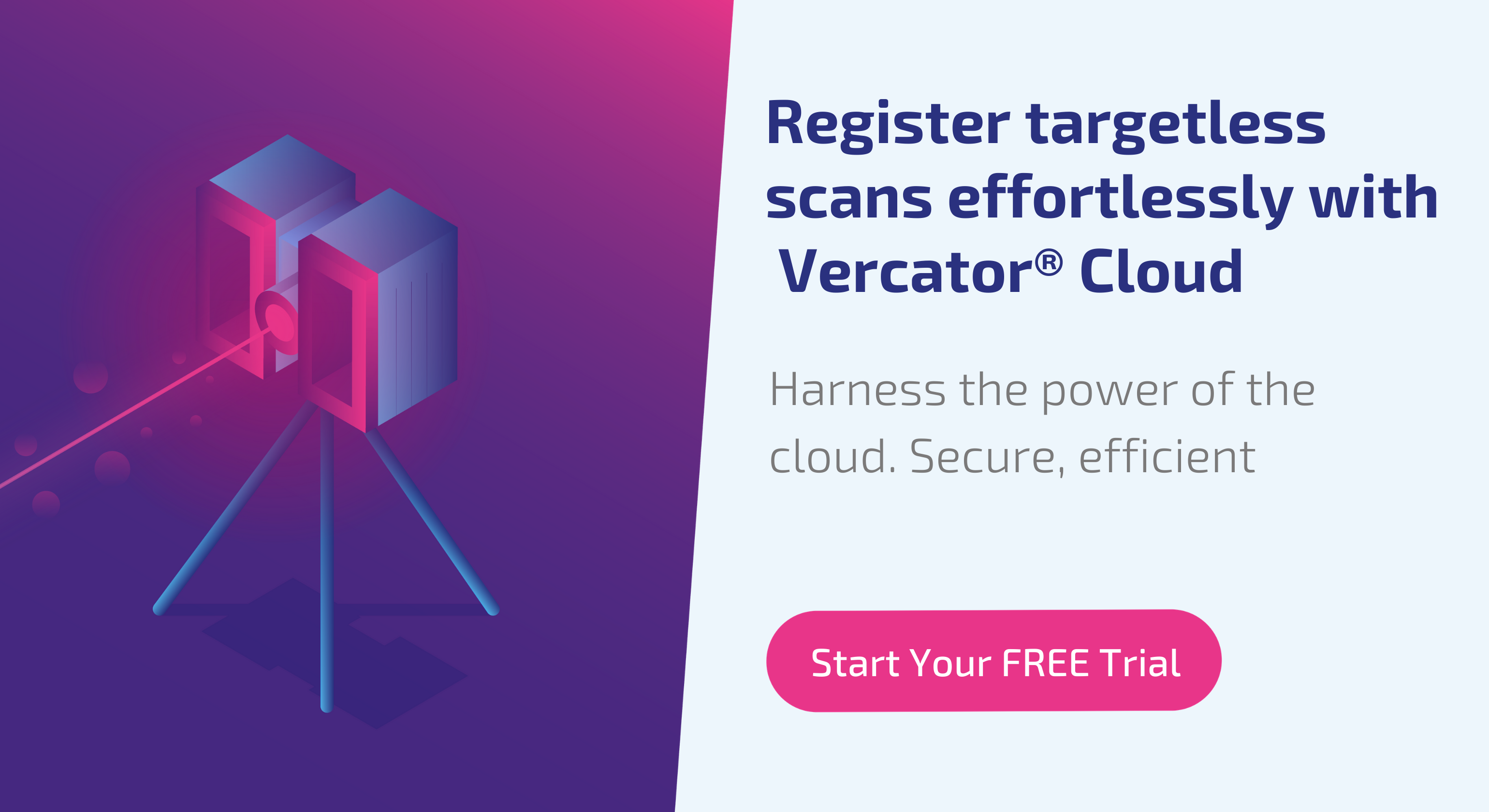6 tips for laser scanning for BIM

Building Information Modelling (BIM) is the future of working in the construction industry. Underpinned by digital technology, such as 3D laser scanning, BIM is enabling new ways of working for better design, delivery and maintenance of physical built assets.
What is interesting is how 3D scanning is proving crucial to provide a bridge between the physical world and the digital world and the evolving Digital Twin; hence the speed and diversity of adoption. Here are a few ways that you can make the most of laser scanning to drive the BIM process.
1. Understand what BIM actually means
BIM is not a technology. While technology is fundamental to BIM, it is adherence to the set of processes (outlined within the ISO 19650 and BS/PAS 1192 series of Standards) that delivers the true transformation — a collaborative approach across the whole supply chain. It is a way of working, rather a physical object or thing.
The concept of ‘BIM Levels’ (and ‘BIM Level 2 compliance’) has become the ‘accepted’ definition of what criteria are required to be “BIM-compliant”.
There are several 'levels of maturity' of BIM: Level 0 describes unmanaged CAD (Computer Aided Design). Level 1 describes managed CAD in 2D or 3D. Level 2 involves developing building information in a collaborative 3D environment. BIM Level 3 fully connects the data produced into a common end-to-end process for construction, fabrication, and facilities management, enabling open collaboration and building lifecycle management.
BIM Level 2 is now being implemented on a large number of projects. It focuses mainly on intelligent libraries and objects and file-based coordination through the different stages of the project to an agreed standard. It should be considered that BIM Level 2 is a prerequisite and stopping off point to Level 3.
Level 3 expands to include collaboration on the use of data from operational, delivery and performance management phases of a project, with full asset detail provided for ongoing facilities management.
The use and definitions of BIM have been tightened up by ISO 19650, released in January 2019 and its associated BSI kitemarks. No more will there be “BIM washing”, as capabilities will be audited and certified. The BIM Level 2 Kitemark will be the benchmark of best practice.
2. Scan-to-BIM from the start
“Scan-to-BIM” is the commitment to use 3D laser scanning to create an accurate digital representation of the physical elements of the BIM project. This digital representation becomes the arbiter for designing, assessing progress or evaluating options.
There are many benefits to adopting Scan-to-BIM. For example, on a typical construction project, rework accounts for up to 15% of the cost of construction. With laser scanning, rework can be reduced to 3% or less.
When starting with BIM, this can be your single largest benefit.
Scan-to-BIM also helps reduce risk by ensuring as-built drawings are accurate. Exposing such inaccuracies early in the process really makes a difference, especially when minimising costly changes during construction.
For BIM, the use of 3D scanners generally falls into two categories: construction and renovation.
- Construction: Laser scanning underpins the BIM process in new construction projects. For example, continuous scanning can provide a time-lapse record of progress with millimetre accuracy along with the actual installation date. Laser scanning can also be used to quickly assess the accuracy of on-site construction, for example, the level of concrete floors.
- Renovation: For renovations, drawings are often extremely out of date or don’t exist. Most as-built drawings are also inaccurate and incomplete. If a building renovation or retrofit is designed based on outdated drawings, errors will be “designed in.” These errors will be invisible until the construction phase, when they will be expensive and time-consuming to resolve.
What is needed in all cases is to create a benchmark for your BIM process. Once these scan-to-BIM benchmark scans are created, additional scanning will ensure accuracy by capturing construction milestones thus providing quality assurance as the project progresses.
As your project progresses, you must have a process which captures the right information at the right level of detail and uses the most efficient method of turning your point cloud scans into useful BIM information.
3. Scan stages of your project
The level of detail of a building information model increases as the project progresses, developing from a simple design intent model through to a detailed virtual construction model, then an as-constructed asset information model (AIM).
Elements of the model will develop at different rates and will be created by different members of the project team. At each stage of the project, BIM requires clear definitions for the information needed by the client or asset owner, and for the standards, methods, milestones and processes that will control its production and review.
The aim is always to ensure the quantity and quality of information produced is just enough to satisfy what is needed at each stage of the project. The unifying glue to enable this to happen is continual 3D scanning to the agreed Level of Detail (LoD).
In BIM, model detail and model information levels are defined for key stages of the project, at which 'data drops' (information exchanges) take place. At present, there is no standardised definition for the timing of data drops or for levels of model detail and model information.
Although it may be tempting to take this as a license to go for the cheapest scan with the lowest resolution needed to meet your immediate requirements, that will not be the best choice in the long run. One of the benefits of having a point cloud 3D model is flexible access to detailed data if plans change.
For BIM purposes, it may be better to invest in a higher resolution scan as early in the project as possible and revisit the data later. You will need to consider your budget along with the time spent scanning and processing. Having the right tools can ease the problem.
4. Make sure you invest in cutting-edge registration software
Point cloud 3D registration is time-consuming. Getting it right allows you to maximise the ways in which you can deploy laser scans within your BIM process.
Using software which encompasses techniques such as multi-stage vector-based processing allows for robust and fast alignments — cutting processing time by 40%-80% depending on the size of the project. Required scan overlap is also reduced to as little as 30% under ideal circumstances.
Most importantly, a more automated process (and the frontloading of the remaining manual inputs) allows scans to be queued for hand-off processing. This enables the processing of more and larger data sets needed for BIM without significant time costs to the surveyors themselves.
Cloud computing is also having a major impact on BIM. By being able to access one cloud-based system and data store, scans can be loaded directly from the field. Registration can even be started on site before then being uploaded, aligned with other scans and shared with team members.
The impact of pairing new kinds of registration software and automation software with cloud computing power is massive to BIM. Using such software as a foundational component of BIM gives you the maximum amount of flexibility at the least cost.
5. Use laser scans to prefabricate materials
Another area to consider when implementing scan-to-BIM is the use of prefabricated materials and 3D printing. This can dramatically decrease construction costs and time. It allows smaller teams to do more while spending less time on location by using simpler manufacturing processes.
While the topic is rapidly emerging, 3D printing also has the potential of simplifying key processes in the facility lifecycle. Again, the success of 3D printing in construction is down to BIM processes and accurate 3D scanning. In the future, you could see 3D printing robots co-existing with workers on construction sites, both scheduling production and assembly while maintaining safety and productivity.
6. Ensure your scans are fit for purpose
As mentioned earlier, the level of detail is a fundamental building block of BIM. For example, if you are planning on using your scans for manufacturing measurements, they will need to be far more accurate than if they’re simply to help create a rough 3D model.
Point cloud surveys differ in detail, coverage and resolution. Whether or not roofs and exterior assets are scanned by default isn’t always the same decision. These things will be reflected in the cost and time it takes to complete the project. BIM processes enable you to document why you need the data and how it will be used.
Basically, you can be specific about the level of detail needed and which elements are required for capture. If you need details about a structure in relation to other structures, surface details, or you are only interested in structural information, this will impact how scanning is carried out and to what level of detail.
BIM is the future
A key problem that BIM addresses is to avoid rushed decisions being made late in the day, supported by insufficient and incorrect information. Starting with the end in mind, the use of Scan-to-BIM enables these decisions to be pushed “upstream” so that they are better understood with no surprises.
Technological advances are now on the point of revolutionising almost all points in the lifecycle of a built asset, from idea to demolition. The key is digitalisation.
By taking advantage of scan-to-BIM and point cloud registration software, we are well on the way to achieving widespread adoption and traction for BIM — especially for Level 3.
Is it worth it? According to the World Economic Forum, wherever technologies such as 3D laser scanning and registration have been properly adopted, especially in a BIM context, the outlook is an almost 20% reduction in total lifecycle costs of a project, as well as substantial improvements in completion time, quality, and safety — confirming that BIM is the future.
Tags: laser scanner


